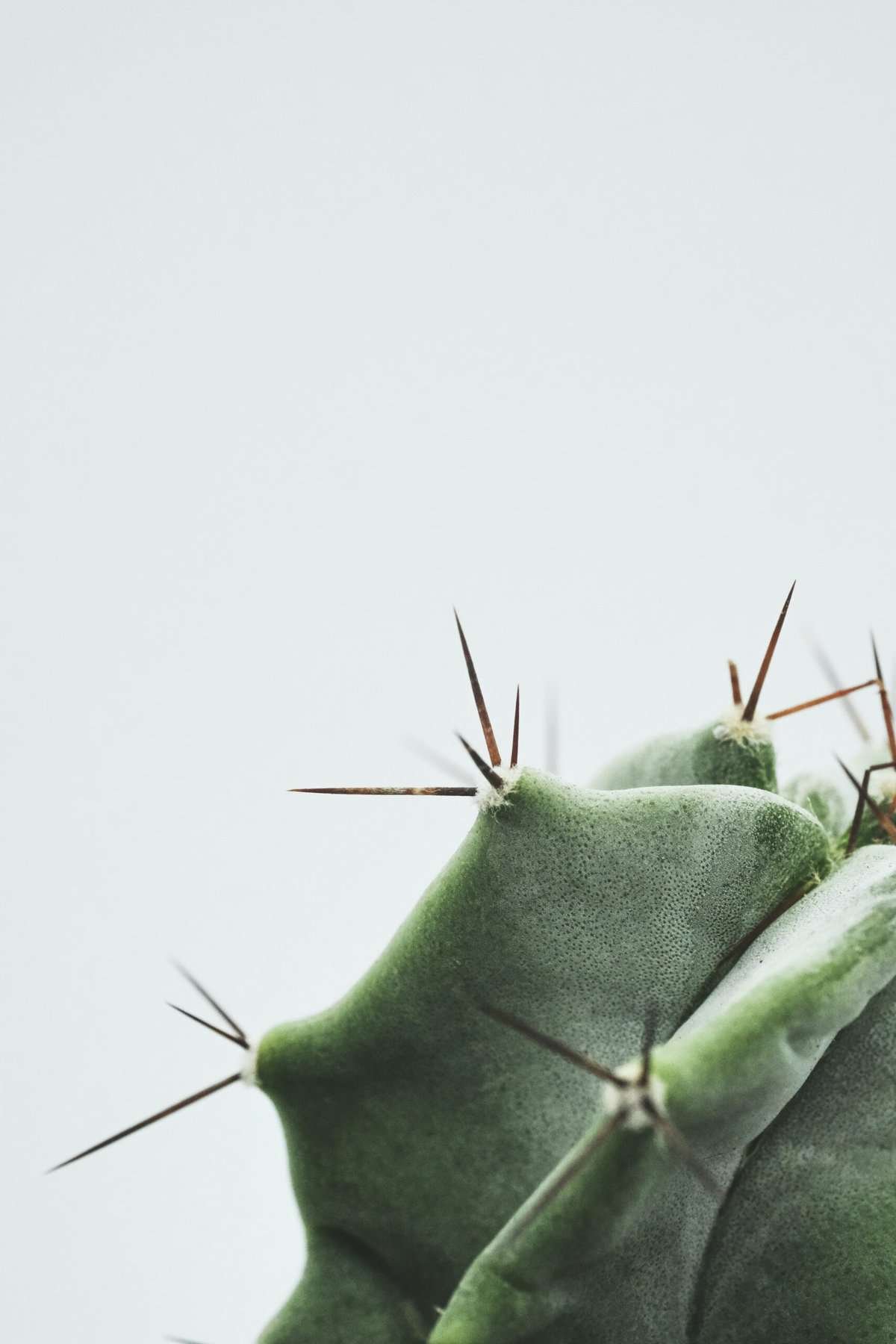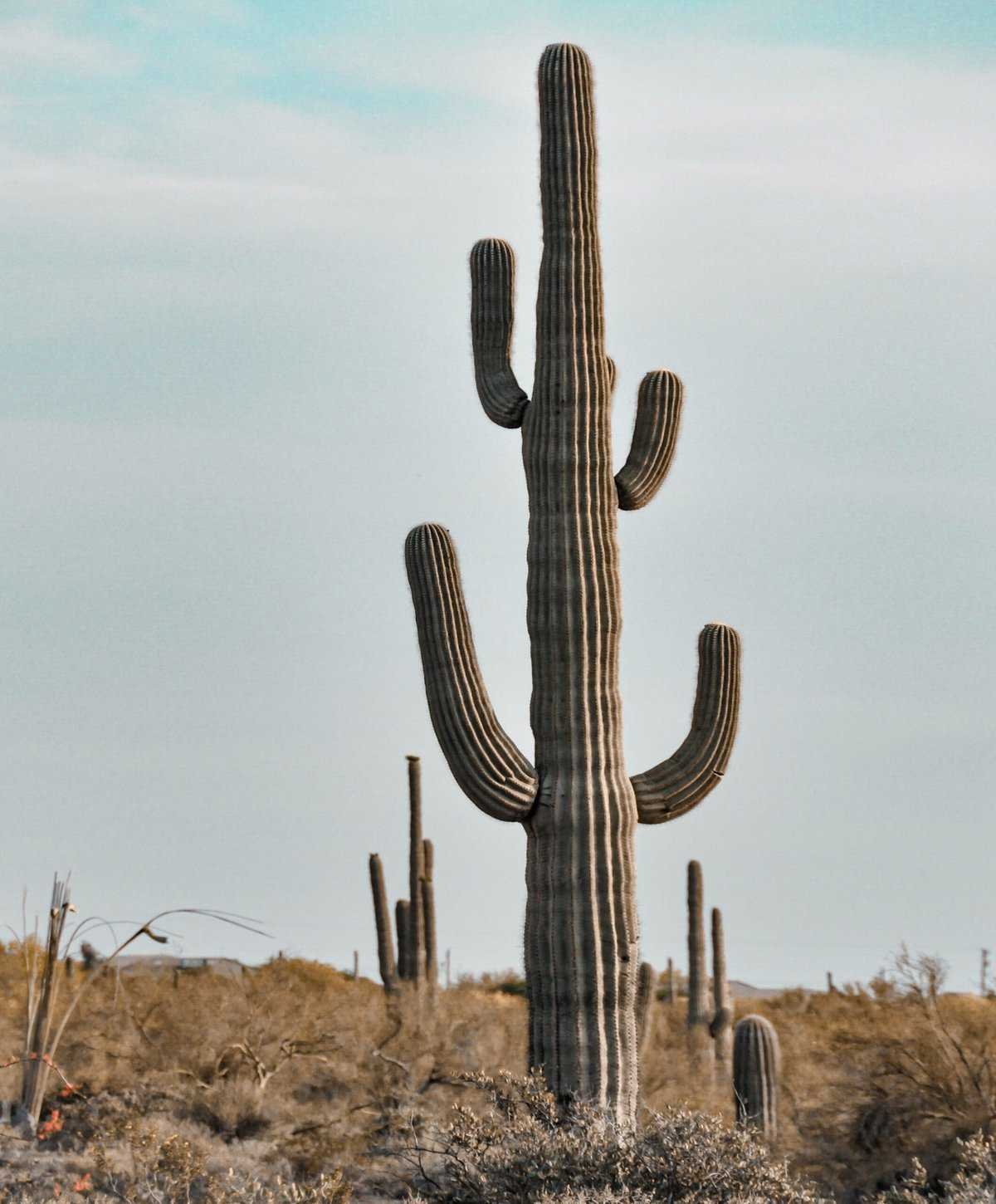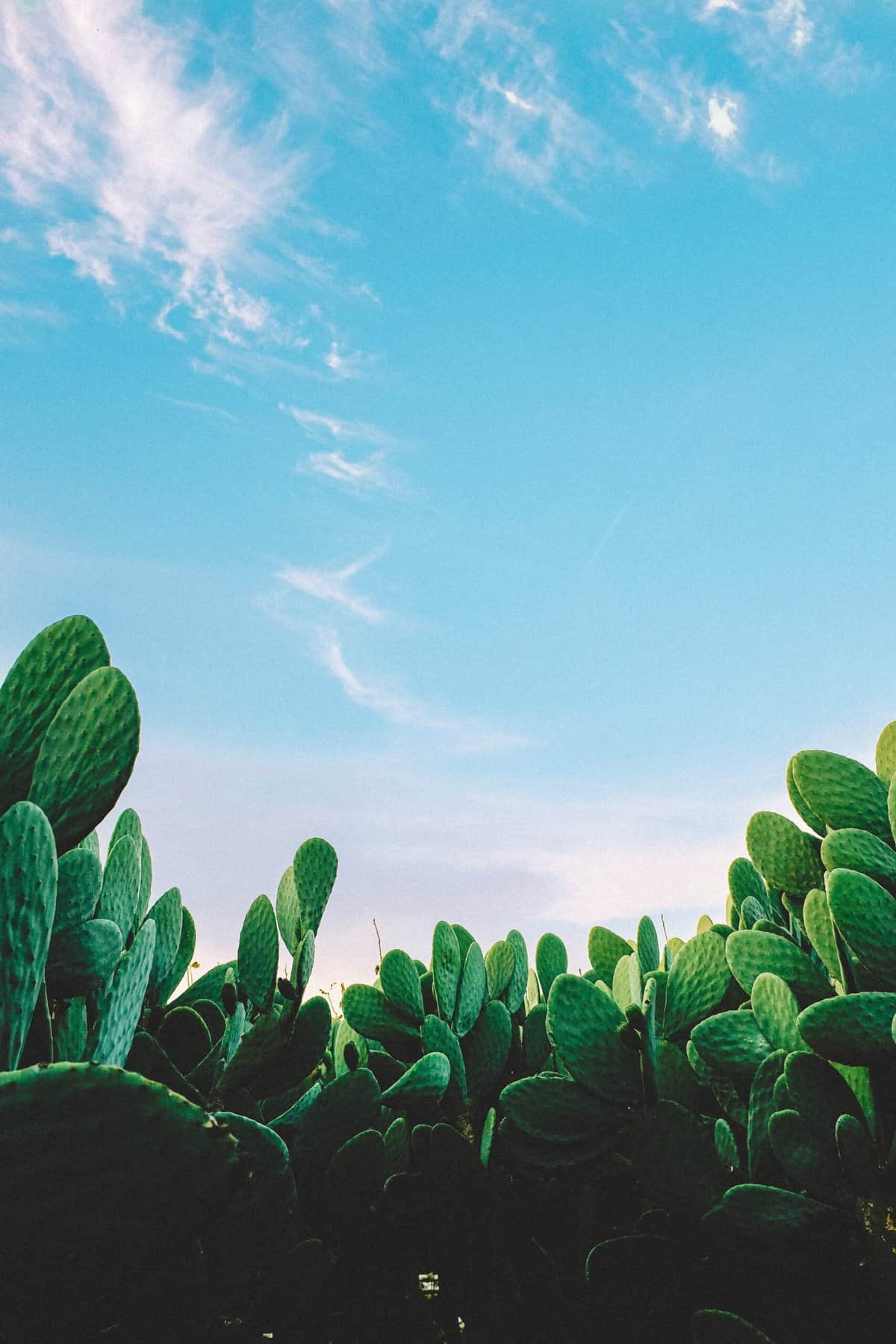If you’ve ever grown tall nopal plants in your garden, you may have found yourself contemplating whether or not to provide them with additional support. These majestic plants, known for their striking appearance and edible pads, have the potential to grow quite tall. In this article, we will explore the question of whether or not supporting tall nopal plants is necessary, and how it can benefit the overall health and growth of these fascinating plants. So, if you’re curious about how to best care for your nopal plants, read on to discover all the tips and insights you need.
Why should I provide support for tall nopal plants?
Enhanced stability
Providing support for tall nopal plants is crucial for their stability. Without support, these plants are prone to leaning or bending under their own weight, especially as they grow taller. Supporting them ensures that they can stand upright and maintain a strong and stable structure.
Prevention of breakage
Tall nopal plants, with their thick and heavy pads, are at risk of breakage if they are left unsupported. The weight of the pads can cause them to snap or fold under pressure, leading to irreparable damage to the plant. By providing support, you can effectively prevent breakage and preserve the health and integrity of the plant.
More efficient growth
When tall nopal plants are supported, their energy can be directed towards efficient growth. With the proper support structure, the plant can focus on developing new pads and roots rather than wasting energy on trying to stay upright. This leads to overall healthier and more vigorous growth, allowing the plant to reach its full potential.
Protection against wind damage
Tall nopal plants are often exposed to strong winds, which can be detrimental to their well-being. Without support, these winds can easily break or topple the plant, causing significant damage. By providing support, you can help the plant withstand strong gusts, minimizing the risk of wind damage and preserving the plant’s overall health.
When should I consider providing support?
Young and growing nopal plants
It is important to start providing support for tall nopal plants when they are still young and actively growing. By doing so, you can support their developing structure from an early stage, ensuring proper alignment and stability as they mature. Providing early support also minimizes the risk of irreversible damage and promotes healthier growth in the long run.
After heavy rains
After heavy rainfalls, the soil around nopal plants can become saturated, making it more prone to erosion and instability. This can lead to the plant leaning or even tipping over if not properly supported. It is advisable to check the stability of the plant after heavy rains and provide additional support if necessary.
In areas with strong winds
If you live in an area where strong winds are common, it is crucial to consider providing support for tall nopal plants. These winds can exert significant force on the plant, potentially causing it to bend or break. By providing support, you can fortify the plant against the strong winds and protect it from damage.
When the plant shows signs of leaning or bending
If you notice your tall nopal plant leaning or bending, it is important to provide support promptly. Leaning or bending can be signs of instability or weakness in the plant’s structure. By providing support, you can help the plant regain its upright position and prevent any further damage or strain on the plant.

Different types of support for tall nopal plants
Staking
Staking is a common and effective method of providing support for tall nopal plants. To stake a nopal plant properly, choose sturdy and durable stakes that can withstand the weight of the plant. Insert the stakes at a slight angle into the soil, ensuring they are firmly rooted. Then, carefully tie the nopal plant to the stake using soft ties, allowing room for growth. Monitor the plant’s growth regularly and adjust the stake if needed.
Caging
Caging is another reliable method of supporting tall nopal plants. Use a strong and sturdy cage that is taller than the plant, ensuring it provides sufficient support. Carefully place the cage around the nopal plant, allowing room for the plant to grow. As the plant grows, adjust and secure the cage to accommodate its increasing size. This method provides stability and prevents the plant from leaning or bending.
Trellises
Trellises are a popular choice for supporting tall nopal plants, particularly those with slender pads that can weave through the trellis structure. Select a trellis that fits the plant’s size and ensure it is securely anchored in the ground or other stable structure. Attach the nopal plant to the trellis using soft ties, allowing for growth and flexibility. Regularly check and adjust the ties as the plant grows to prevent any constriction or damage.
Support from nearby trees or structures
If your tall nopal plant is located near trees or other sturdy structures, you can utilize them as natural support. Choose a suitable nearby support that can handle the weight of the plant, such as a strong branch or a fence. Securely tie the nopal plant to the chosen support, ensuring that it is stable and will not cause any harm to the plant. Regular monitoring and adjustments may be necessary as the plant grows.
Choosing the right support method
Consider plant size and weight
When choosing a support method for your tall nopal plant, it is important to consider its size and weight. Larger plants may require stronger and more substantial support structures, while smaller plants may only need lighter support. Assess the overall dimensions and weight of the plant before selecting a support method to ensure it is suitable and can adequately hold the plant’s weight.
Evaluate environmental conditions
The environmental conditions in your area play a significant role in determining the appropriate support method for tall nopal plants. If your location experiences strong winds or heavy rains, consider staking or caging as these methods offer more stability and protection. In areas with less extreme conditions, trellises or nearby structures might provide sufficient support. Evaluating the specific environmental conditions will help you choose the most suitable support method.
Aim for natural-looking support structures
While providing support is essential, it is also important to aim for natural-looking support structures. The support should blend in with the plant’s surroundings and not appear unnatural or obtrusive. You can choose materials and designs that complement the aesthetic of your garden or landscape to create a harmonious and visually pleasing appearance.
Ensure ease of maintenance and access
Consider the ease of maintenance and access when selecting a support method. You will need to regularly monitor and adjust the support structure as the nopal plant grows. Make sure the support is easily accessible, allowing you to attend to the plant’s needs without difficulty. Additionally, choose materials and designs that are low-maintenance and durable to minimize the upkeep required.

How to stake tall nopal plants properly
Choose sturdy and durable stakes
When staking tall nopal plants, it is crucial to select stakes that are strong and durable. Choose materials such as bamboo or metal that can withstand the weight of the plant and are not easily affected by weather conditions. Ensure that the stakes are long enough to provide sufficient support and stability for the entire plant’s height.
Insert stakes at a slight angle
To stake tall nopal plants properly, insert the stakes at a slight angle into the soil. This angle allows the stakes to provide better support and stability. Insert the stakes in a triangle formation around the base of the plant for optimal support. Ensure that the stakes are firmly rooted in the soil to prevent them from shifting or coming loose.
Secure the nopal plant to the stake with soft ties
Once the stakes are in place, carefully secure the nopal plant to the stakes using soft ties. Soft ties, such as gardening twine or plastic plant ties, are gentle on the plant’s pads and allow for growth without constricting or causing damage. Tie the plant loosely to the stakes, leaving some space for expansion as the plant grows. Regularly check the ties and adjust them if necessary to prevent any constriction.
Monitor the plant’s growth and adjust stake if needed
As the nopal plant grows, it will require occasional adjustments to the stakes. Monitor the plant’s growth regularly and check if the stakes provide adequate support. If the plant appears to be leaning or bending, it may indicate that the stakes need repositioning or additional support. Adjust the stakes accordingly to ensure the plant remains upright and well-supported.
Caging tall nopal plants for support
Use a strong and sturdy cage
When caging tall nopal plants, it is important to use a cage that is strong and sturdy. Select a cage made of durable materials such as metal or thick wire that can withstand the weight of the plant and resist bending or collapsing. The cage should be taller than the plant to provide sufficient support and stability.
Place the cage around the nopal plant carefully
To cage a tall nopal plant, carefully place the cage around the plant without causing any damage. Gently guide the nopal pads through the openings of the cage, ensuring they are not constricted or tangled. Make sure the cage is positioned evenly around the plant and that it provides equal support on all sides.
Adjust and secure the cage as the plant grows
As the nopal plant grows, the cage may need adjustments to accommodate its increasing size. Regularly check the cage and make any necessary modifications to ensure the plant is well-supported. Secure the cage firmly to the ground to prevent any movement or instability. By regularly monitoring and adjusting the cage, you can ensure the nopal plant receives the necessary support throughout its growth.

Utilizing trellises for tall nopal plants
Select a trellis that fits the plant’s size
When using trellises to support tall nopal plants, it is important to select a trellis that fits the plant’s size. Choose a trellis with enough space between the wires or slats for the plant’s pads to weave through. The trellis should be strong and stable, capable of supporting the weight of the plant as it grows taller and develops more pads.
Attach the nopal plant to the trellis using soft ties
To attach a tall nopal plant to a trellis, use soft ties such as gardening twine or plant ties. Gently secure the plant’s pads to the trellis, allowing room for growth and flexibility. Avoid tying the pads too tightly, as this can restrict the plant’s natural movement and cause damage. Regularly check the ties and adjust them as needed to ensure they remain loose and accommodate the plant’s growth.
Regularly check and adjust ties as the plant grows
As the nopal plant grows, its pads will continue to expand and elongate. Regularly check the ties attaching the plant to the trellis and adjust them accordingly. Loosen or reposition the ties to prevent any constriction or damage to the pads. By consistently monitoring and adjusting the ties, you can ensure the plant remains well-supported while allowing for its natural growth.
Supporting tall nopal plants with nearby trees or structures
Choose a suitable nearby support
Supporting tall nopal plants with nearby trees or structures can be an effective and natural method. Choose a nearby support that is sturdy and can adequately handle the weight of the plant. For example, a strong tree branch or a secure fence can offer reliable support. Ensure that the chosen support is appropriate for the plant’s size and will not cause any harm or damage.
Securely tie the nopal plant to the support
Once you have chosen a suitable nearby support, securely tie the nopal plant to it. Use soft ties such as gardening twine or plant ties to gently secure the pads to the support. Make sure the ties are tight enough to provide support but not so tight as to constrict the plant’s growth. Regularly check the ties and adjust them as needed to ensure they remain effective.
Ensure the chosen support can handle the weight of the plant
When utilizing nearby trees or structures for support, it is crucial to ensure that they can handle the weight of the nopal plant. Verify that the structure is stable and strong enough to withstand the plant’s weight, especially as it grows taller and more pads develop. Consider consulting with an expert if you are unsure about the structural integrity of the chosen support.
Potential risks and challenges of providing support
Restricting natural growth
While providing support for tall nopal plants is essential, there is a risk of restricting their natural growth. Improper support methods or constraining ties can hinder the plant’s ability to extend its pads or roots fully. It is crucial to choose support structures and ties that allow for expansion and flexibility, ensuring the plant can grow and develop naturally.
Potential damage from improper support
Improper support methods or poorly chosen support structures can potentially damage tall nopal plants. Weak or unstable support may fail under the weight of the plant, leading to breakage or other injuries. Ties that are too tight or constricting can also cause damage to the pads or impede the plant’s growth. It is important to carefully select suitable support methods and regularly monitor their effectiveness to avoid such issues.
Maintenance requirements
Supporting tall nopal plants requires regular maintenance to ensure the support structures remain effective. Stakes and cages may need repositioning or reinforcing as the plant grows, while trellises and ties may need adjustments to accommodate the plant’s expanding pads. Regular monitoring and maintenance are necessary to prevent any issues or failure of support structures.
Dependency on external support
Providing support for tall nopal plants creates a dependency on external structures or nearby trees. The plant may become reliant on the support and struggle to sustain itself without it. This dependency can be problematic if the support is suddenly removed, such as during severe weather conditions or if the nearby structure is no longer available. It is important to strike a balance between providing necessary support and allowing the plant to develop its own strength and stability.
Conclusion
Supporting tall nopal plants is crucial for their stability, growth, and protection against damage. The enhanced stability provided by support helps prevent breakage and promotes more efficient growth. Depending on the plant’s size and environmental conditions, various support methods such as staking, caging, trellising, or utilizing nearby trees or structures can be utilized. However, it is essential to consider potential risks and challenges associated with providing support, such as restricting natural growth or potential damage from improper support. By carefully selecting the right support method and regularly monitoring and adjusting as needed, you can ensure the well-being and success of your tall nopal plants.

